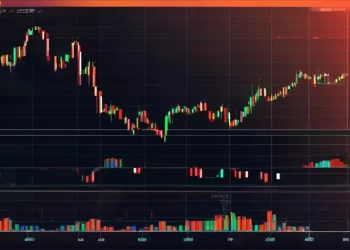Refunding Ethereum gas fees was first implemented during the Byzantium hard fork in October 2017. During that period, Ethereum underwent a consensus algorithm change and enhanced the functioning of Smart Contracts on the network. New investors often have questions about their eligibility for gas refunds, causing some confusion. So, let’s dive into that in this blog post.
What are Ethereum gas fees, and why are they charged?
Within the Ethereum network, many transactions occur, each requiring a fee to be paid to finalize the process successfully. It’s known as Gas, and its value can fluctuate based on transaction size and the current state of the network.
The Gas has two additional fee structures: the base fee and the priority fee (tip). Regarding the transaction, the gas fee is calculated as follows: Calculate the total cost by multiplying the units of Gas used by the sum of the base fee and priority fee.
Typically, the gas fees on the Ethereum network tend to be higher than other blockchain networks, leading to a rise in the adoption of layer2 solutions.
Ethereum gas fees are essential for the network as they serve three crucial functions:
- It compensates the miners or validators for verifying the transaction.
- It ensures the smooth processing of your transaction, preventing any delays or complications.
- It provides efficiency to the Ethereum network, preventing it from becoming prohibitively expensive.
Can Ethereum gas fees be refunded?
Typically, Ethereum Gas fees cannot be refunded since they compensate for the validators’ important task of validating transactions. However, there are a few instances where it could occur.
One instance where the transaction fails is when it doesn’t go through to the recipient. However, there is a catch to consider regarding the reversal of gas fees to the sender in that scenario. Only a fraction of the Gas will be reimbursed.
Another important scenario to consider is when the fee charged during the transaction is too low. If the compensation is insufficient for the validator, the transaction’s priority will be reduced. Therefore, the transaction could be overlooked amidst the vast sea of memes. Afterward, the user can retrieve or cancel the transaction and request a refund for the Gas.
Occasionally, due to Smart Contract issues, transactions may experience delays or encounter technical difficulties, which can hinder the process. Given the circumstances, the user can receive a portion of their transaction fees.
Why is this gas fee refund significant for the investors?
As previously stated, investors can only receive a gas refund for failed transactions. It is reasonable to expect a refund when the transaction’s purpose has not been fulfilled.
Ethereum’s gas fees can be quite expensive in different situations, not exactly on the cheaper side. These refunds can provide financial support to the user for their upcoming transaction. In addition to that, it ensures transparency in the network. The user will receive the appropriate refund, which will aid in their comprehension of how the remaining funds are to be utilized.
Compared to networks that disapprove of gas return, the returning network is favored by the audience. So, the gas fee plays a crucial role in upholding the network’s integrity. Most importantly, the user would want to utilize the network once more.
In conclusion
One of the appealing aspects of the Ethereum network is its ability to refund gas fees. There is ongoing discussion regarding these fees, with many advocating for their elimination to facilitate smoother processes. Throughout the years, the Ethereum team has been diligently working on decreasing transaction fees to enhance their services. Their most recent effort in this regard was the Ethereum Dencun upgrade.

























